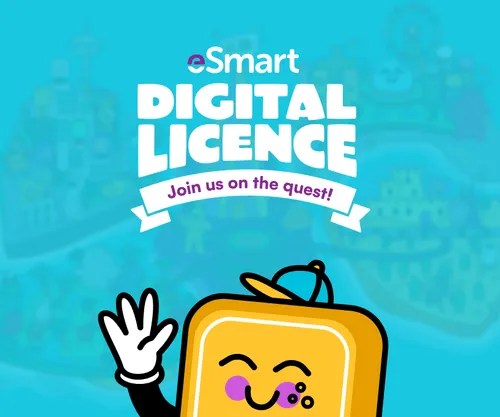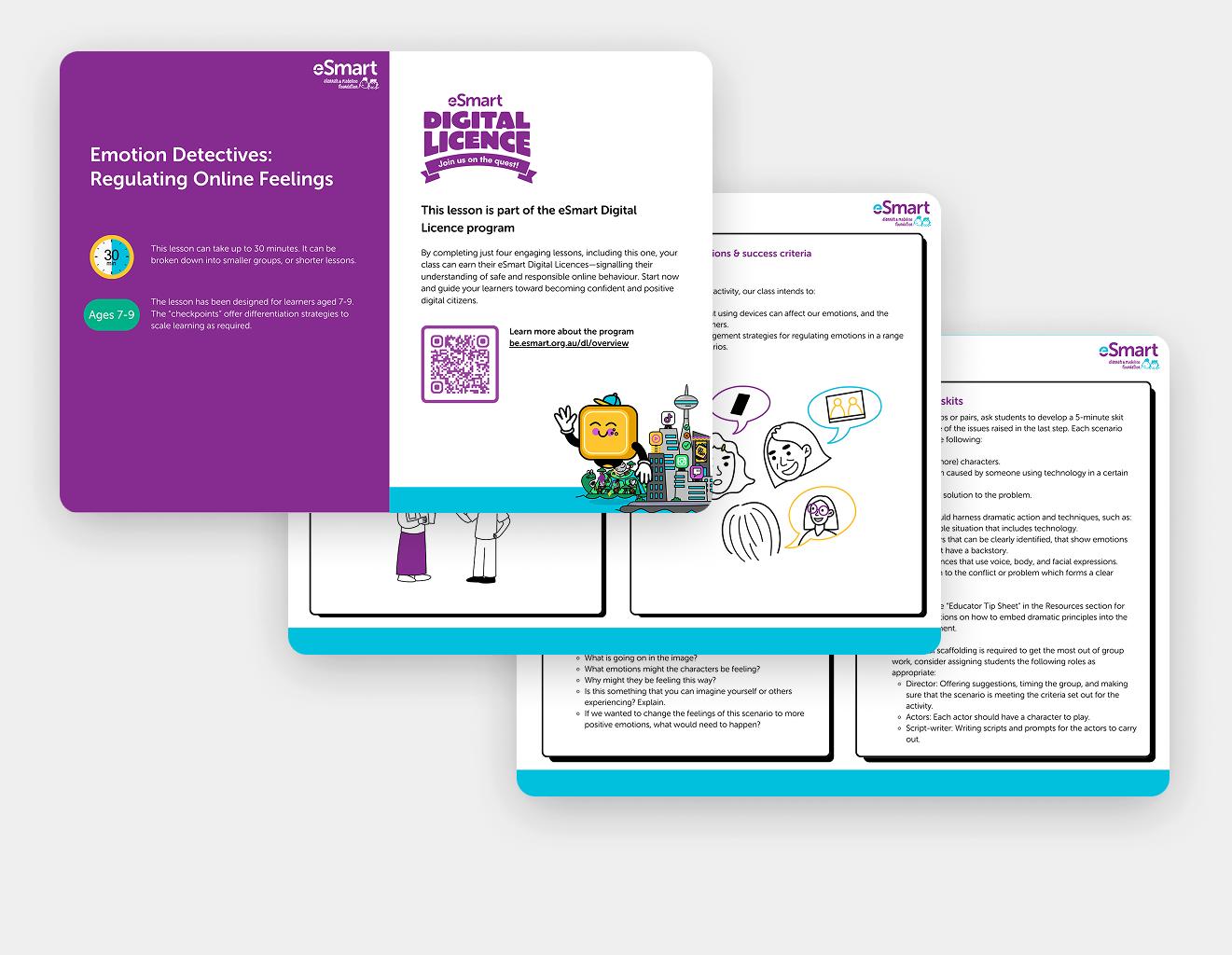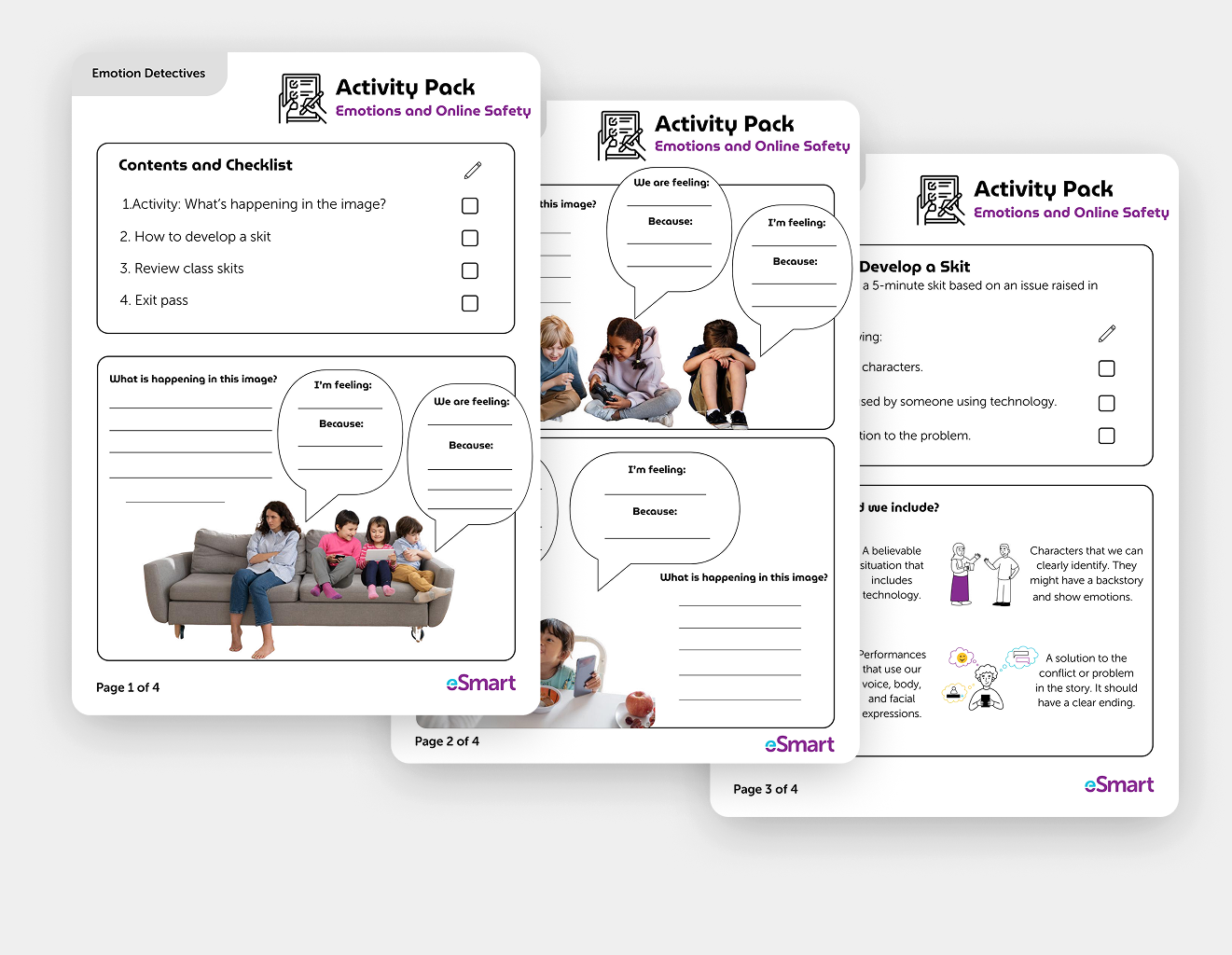Download Lesson Pack
Emotion Detectives: Regulating Online Feelings

Child Safeguarding Statement
Some resources and activities may prompt a child to remember and potentially share an experience of harm. Make sure you’re familiar with your school's safeguarding policies and procedures so you can confidently report safety and well-being concerns.
Prepare students for the session by discussing: their right to be safe and respected; what to do if discussing online safety makes them feel uncomfortable or unsafe; and how to seek help if they feel or have felt unsafe. Use this resource available on the website.
Emotion Detectives: Regulating Online Feelings
This activity addresses issues related to technology use at school and home, promotes critical thinking about its emotional and social impact, develops self-regulation strategies, and cultivates communication skills such as active listening and empathy.
Lesson details
Compulsion
About this Risk Area
Addresses excessive use of digital devices or online activities which can impact children's mental health, academic performance, and social relationships.
Example topics:
- Understanding the importance of balanced screen time.
- Developing healthy habits for managing digital device use and prioritising offline activities.
- Setting boundaries and practicing self-regulation when it comes to online gaming, social media, and other digital activities.
The resources for this risk area promote healthy relationships with technology and encourage positive social and emotional wellbeing.
In this roleplay lesson, learners will create and act out scenes to explore how certain patterns of technology usage can affect their feelings and emotions.
By understanding how technology impacts their well-being and feelings, learners will begin to recognise the physical and emotional signs of device overuse, and learn the skills necessary to develop more mindful online habits.
For further guidance on fostering emotional intelligence in relation to the Compulsion risk area, please refer to the Educator lesson notes in the Resources section.
Learning Intentions
By completing this activity, our class intends to:
- Understand that using devices can affect our emotions, and the emotions of others.
- Describe management strategies for regulating emotions in a range of online scenarios.
Curriculum alignment
Australian Curriculum (Version 9.0)
The Australian Curriculum outlines the fundamental knowledge, comprehension, and abilities students are expected to acquire as they advance through the initial 11 years of schooling.
Years 3 and 4: General Capabilities
Personal and Social Capabilities
Emotional awareness:
- Level 3: Explain the influence that their own behaviour has on the emotional responses of others.
Emotional regulation:
- Level 3: Manage and moderate emotions in familiar contexts, using provided strategies.
- AC9ADR4D01: Use the elements of drama to explore and develop ideas for dramatic action in improvisations and/or devised drama.
- AC9ADR4C01: Improvise and/or devise and shape drama using the elements of drama to communicate ideas, perspectives and/or meaning.
Years 3 and 4: Health and Physical Education
- AC9HP4P06: Explain how and why emotional responses can vary and practise strategies to manage their emotions.
- AC9HP4P10: Investigate and apply behaviours that contribute to their own and others’ health, safety, relationships and wellbeing.
CASEL Framework
The CASEL Framework creates a foundation for applying evidence-based, Social and Emotional Learning (SEL) strategies both at school and in the broader community. Its aim is to support the cultivation of SEL skills and environments that advance students’ learning and development.
- Self-awareness: The abilities to understand one’s own emotions, thoughts, and values and how they influence behaviour across contexts.
- Social-awareness: The abilities to understand the perspectives of and empathise with others, including those from diverse backgrounds, cultures, and contexts.
My Time, Our Place – Framework for School Age Care in Australia
The aim of My Time, Our Place: Framework for School Age Care in Australia (the Framework) is to assist educators to provide children and young people with opportunities to maximise their potential and develop a foundation for successful lifelong learning. The Framework has been designed for use by approved providers and school age care educators working in partnership with children and young people, their families and the community, including schools.
Outcome 1: Children have a strong sense of identity.
Children learn to interact in relation to others with care, empathy, and respect.
This is evident when children:
- Identify the role of people in their lives and how they use technology and support children to use technology in appropriate ways.
Outcome 2: Children are connected with and contribute to their world.
Children develop a sense of belonging to groups and communities and an understanding of the reciprocal rights and responsibilities necessary for active community participation.
This is evident when children:
- Understand that different people will use digital things at different times and for different reasons.
- Communicate and demonstrate an understanding that they are a part of a world that shares and communicates using digital things.
- Demonstrate an ability to share and respect others’ use of digital things.
Outcome 3: Children and young people have a strong sense of wellbeing.
Children become strong in their social, emotional and mental wellbeing, particularly when they are aware of and develop strategies to support their own mental and physical health, and personal safety.
This is evident when children:
- Identify emotions and feelings in relation to digital device usage, and attempt to explain why such feelings might arise.








